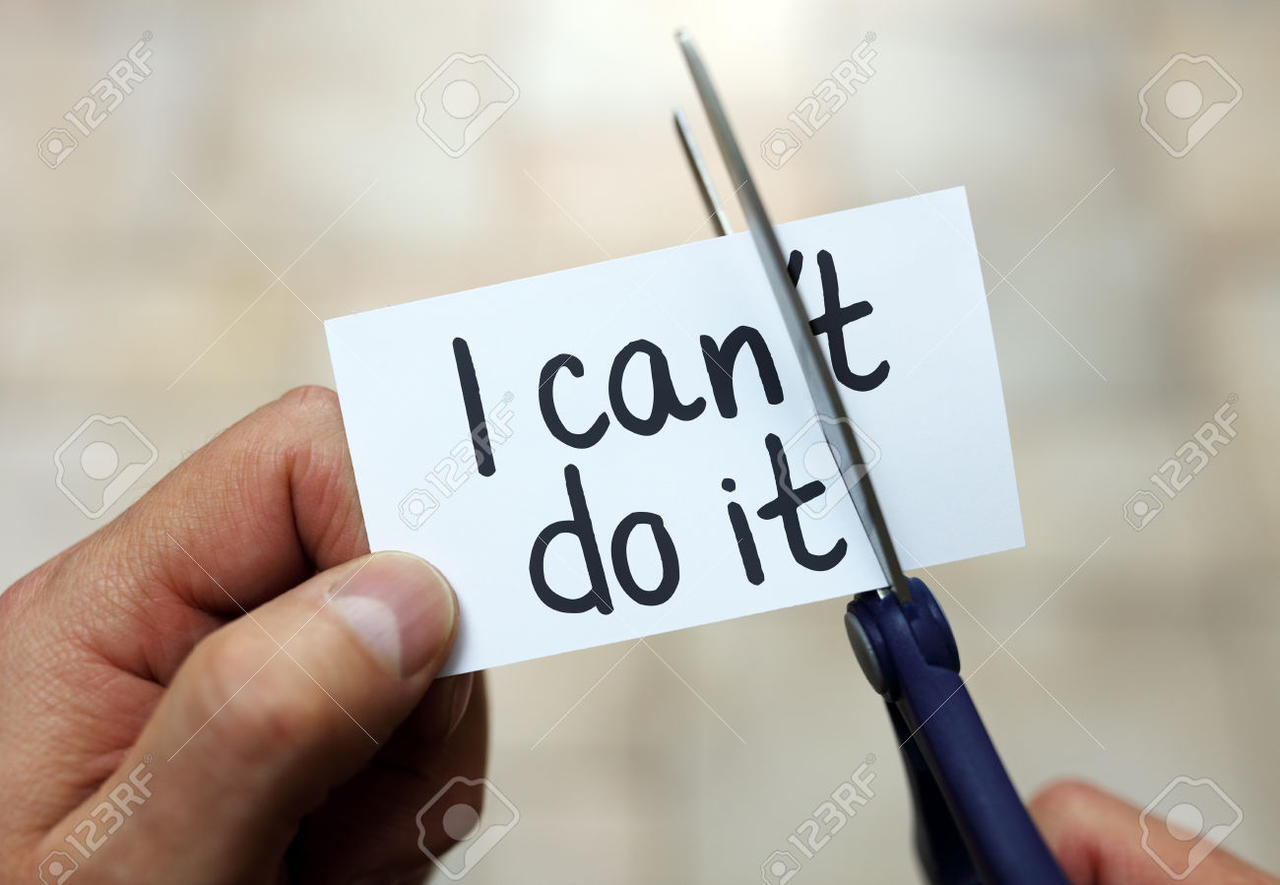
by admin | Jun 23, 2011 | Uncategorized
Your Career
"The single biggest problem in communication is the illusion that it has taken place."
George Bernard Shaw
~~~~~~~~~~~~~~~~~~~~~~~~~~~~~~~~~~~~~~~~~~~~~~~~~~~~~~~~~~~~~~~~~~~~~~~
Triangulation in Communication
Triangulation in communication occurs when one person avoids communicating directly with another regarding an issue or problem, but instead talks with a third party about it.
Most of us have had this experience. In the workplace, it's often part of office politics, or office gossip. For example someone you manage incessantly comes to you as her supervisor to complain about a colleague. You patiently try to convince her to speak directly to "Sally" about the problem, but she can't or won't do it.
You're left wondering why on earth someone chooses to communcate that way, but even worse, for whatever reason, you may not feel able to put a halt to the triangulating process.
Generally speaking, triangulating communication is an ineffective and psychologically unhealthy communication habit that is learned with a family of origin system. The concept of triangulation comes from Family Systems Theory and is somewhat lengthy to address in this newsletter article. However, Dr. Murray Bowen, one of the pioneers
of Family Sustems Theory provides a thorough understanding of the concept.
There can appear to be payoffs for triangulating. One is a temporary feeling of closeness to the person with whom we are triangulating. For example, when someone is triangulating with her boss, it may be an attempt to create closeness and can even feel like relationship building. Another payoff is that someone venting about a third person can be lowering her anxiety regarding a particular issue. She rationalizes her behavior, telling herself she's just "venting." While some of us might considerventing to be good for the soul, it can move quickly to an unhealthy, even toxic communication pattern that contributes to office gossip.
Effective communicators see triangulation for what it is–a dysfunctional way of trying to communicate that, left unchecked, often develops into relationship problems in the workplace, within families and within communities.
Tips For Handling Triangulation:
1. Role model being a direct communicator. If you have an issue or problem with someone, always go directly to the person; present your concern in a non-accusatory
fashion and ask for their help. Most people are willing to help solve a problem, especially when it is presented in a respectful manner. If the issue feels overwhelming or you lack confidence, arrange for a professional to mediate the situation with you. Each learning experience will help you hone your skills.
2. Stop triangulation in its tracks. If someone initiates a conversation with you about a third party there are several things you can do to stop it. One is to suggest the discussion be delayed until the other person can join the group. Another is to change the topic to something neutral that you know is of interest to the speaker.
A third option is to affirm that you have heard the person and then encourage them to speak to the third party directly. And if you are in a supervisory role, demonstrate your leadership skills by offering to help the person communicate with the third party about their concern.
Advanced communication skills are a prerequisite for career success because they benefit all of our relationships. A direct, honest and respectful communication style will consistently result in empowering, satisying, and confidence building experiences.
Take good care,
Kathleen

by admin | May 1, 2011 | Uncategorized
You have no control over another person, but you always have control over how you choose to respond to that person.
~~~~~~~~~~~~~~~~~~~~~~~~~~~~~~~~~~~~~~~~~~~~~~~~~~~~~~~~~~~~~~~~~~~~~~~~~~~~~~~~~~~~~~~~~~
Boundaries in Relationships
We must not underestimate the importance of healthy personal boundaries in all of our relationships: in the workplace, with our family and close friends and with community or social groups. Understanding the importance of maintaining healthy boundaries may be the best personal/professional development work we can do to enhance our career.
Personal boundary violations, at their best create confusion and disappointment, and at their worst result in anger, resentment and occasional dissolution of a relationship. This is less likely to happen when people are clear about their boundaries.
In the physical world, boundaries are easy to see. Fences, walls, hedges etcetera,are all physical boundaries that send the message this is private property. An individual's personal boundary, however, is invisible, nevertheless, it distinguishes that person as separate from another.
When an individual's boundaries are not healthy and strong, the result can be a fusion of herself with another person or persons. This can range from minor interference in daily activities or life decisions, to significant imposition of control in the life of another.
The purpose of personal boundaries is to protect and maintain the intregrity of the person. Healthy boundaries keep what might harm us, outside our fence. But healthy boundaries are not solid walls; they are permeable enough to allow good things in, yet strong enough to keep danger out.
Ideally, people develop healthy mental, physical, emotional and spiritual boundaries which help them define the extent of their responsibility to themselves or to others,over the course of their life. For example, healthy boundary development keeps me
from overfunctioning in my work roles, from taking inappropriate responsibility for the well-being of another and from not protecting my own personal well-being.
The development of healthy boundaries begins within the parent-child relationship.
When children are young and helpless, parents are responsible for their safety, security and well-being. During the various growth stages of the child, psychologically healthy parents adjust their role from protecting and controlling when the child is young, to one that allows the adolescent and developing adult to learn self-responsibility. Healthy boundary development is integral to the growing person to learn to take responsibility for her life.
When a person is experiencing boundary dilemmas, she may be asking questions like "Why do I feel guilty or afraid whenever I consider setting boundaries?" "Can I set limits and still be a loving person?" "What if someone becomes hurt or upsetwhen I maintain my personal boundaries?" "Am I being selfish when I set boundaries?"
It's never too late to do personal boundary work. A good place to begin is being clear about how you want to be in relationship with others. Examine your values, beliefs and priorities, and monitor your behavior to ensure it consistently and congruently reflects how you want to live. If there are changes you need to make,start small. For instance, try saying "no" the next time someone asks you to do
something that you honestly are not interested in doing.
Assertive communication is important for personal boundary development work. Check out your assertiveness level and then if needed, set some boundary development goals for yourself.
Take good care,
Kathleen

by admin | Apr 1, 2011 | Uncategorized
Career Tip
"At work, you think of the children you have left at home. At home, you think of the work you've left unfinished. Such a struggle is unleashed within yourself. Your heart is rent."
Golda Meir
~~~~~~~~~~~~~~~~~~~~~~~~~~~~~~~~~~~~~~~~~~~~~~~~~~~~~~~~~~~~~~~~~~~~~~~
Managing Unhealthy Guilt
Women tend to experience guilty feelings more than men, perhaps in part due to the fact that women are different emotionally. Some believe that women's brains are wired differently, as they tend to be more highly sensitized to emotions. This can lead to stronger reactions, or an over-functioning response to situations that are emotionally charged.
Guilt can be healthy, for example, when we feel bad after behaving inappropriately or dishonestly. This healthy guilt can increase our motivation to problem solve or teach us an important lesson about the consequences of hurtful behavior. Healthy guilt can also improve our personal leadership skills and enhance our behavior in relationships, making it an advantage from a career perspective.
But what about unhealthy guilt? This type of guilt can occur as a result of persistently feeling devalued, flawed or unworthy. The fear of not doing enough, or not measuring up, is at the heart of this kind of unhealthy guilt. These feelings and the associated guilt is still not uncommon for many women today, despite the enromous strides made in women's careers over the past fifty years.
Fear, coupled with anxious thinking, automatically activates the Stress Response in our body. This response evolved to protect us from danger by triggering a surge of powerful hormones to provide us with the energy needed to defend ourselves or to escape. Joan Borysenko, in her book GUILT is the teacher, LOVE is the lesson, uses a metaphor of the stress response being like the overdrive shift in a car.
It's handy occasionally, but if we keep the car in overdrive all the time, the parts wear out, creating serious mechanical difficulties. In people, these difficulties include severe stress and anxiety-related disorders. Thus begins the career journey to burnout, unless we learn how to quiet the destructive inner voice of guilt.
When our career decisions and strategies are motivated by fear from self-doubt and guilt, the result is often self-defeating behaviours like perfectionism, over-achievement,narcissism, co-dependence and other attempts to bolster our fledgling ego. In Joan Borysenko's words unhealthy guilt is an autoimmune disease of the soul that causes us to reject our own worth as human beings….guilt causes life to become rganized around the need to avoid fear rather than the desire to share ove." Borysenko suggests that healing unhealthy guilt begin with a earch for the true or authentic Self. Her advice also includes that this search journey is enhanced through using a holistic
spirit-mind-body approach. (Source: GUILT is the teacher, LOVE is the lesson by Joan Borysenko, PhD).
For daily management of the anxiety and fear arising from unhealthy guilt, mastering mind-body exercises can be very helpful, e.g. diaphragmatic breathing, mindfulness meditation, and the practice of yoga. A simple place to begin is to learn abdominal breathing. The following exercise is from Joan Borysenko's book Minding The Body:
Mending The Mind–another great resource.
Diaphragmatic Breathing Exercise:
Sit in a straight-backed chair, sliding forward slightly. If needed, place a pillow behind the small of your back. Place one hand palm down over your navel and the other hand on top of it. Without trying to change your breathing, just notice whether your belly expands or flattens when you inhale. It can help to close your eyes to concentrate. If your belly does not move when you inhale, that means you are breathing from your chest. You can shift into abdominal breathing by taking a deep breath in and then blowing it out completely through your mouth. You will notice your belly flatten and can flatten it even more by squeezing out every bit of air. Now just let the next breath flow in through your nose and let your belly expand.
Implement diaphragmatic breathing throughout your day. Two or three minutes of abdominal breathing will immediately reduce tension, anger or stress. You can use this breathing technique whether you are in an important meeting at the office, or standing in
line with kids in the cart at the supermarket.
Take good care of yourself,
Kathleen

by admin | Mar 1, 2011 | Uncategorized
"Think highly of yourself because the world takes you at your own estimate."
How does your self-image support your career well-being? Are you intentional about how you present yourself to the world? Is your projected self-image congruent with the real you?
Self-image is the set of ideas held by a person about her qualities and abilities. Self-image is developed and evaluated over time by daily interactions and life experiences,and is greatly influenced by how we are perceived and assessed by others. Self-image and self-concept are interrelated and as terms, are often used interchangeably.
When life experiences have been negative, the mental image held of oneself (self-image)may be the most significant career hurdle they have to overcome on their journey to achievement and success.
A negative self image is developed from a sense of helplessness, loss of control, pessimism or negative thinking, which have become patterns and a way of life. A negative self-image leads individuals to depend more on external events and people to tell them who they are, rather than a solid foundation of high self regard.
While self-concept or self-image is made up of learned beliefs, attitudes and opinions held of oneself, self-esteem is the emotional aspect–the person's feelings of perceived self-worth.
People with low self-esteem often function out of a fear of rejection, making them more likely to be "pleasers" in their relationships, personally and professionally. This often leads to the person taking on too much in an attempt to validate her self-worth. This can become a vicious cycle of over-functioning. First, there is the temporary relief from the adrenaline fix of "doing for others," but that is
quickly followed by guilt, failure and depression from taking on more than can be handled. The result is further feelings of inadequacy that in turn reinforce the deeply held belief that the person is never good enough, and the cycle repeats itself.
Low self-esteem may also affect one's ability to manage conflict and to be assertive–two skills necessary for building the strong interpersonal relationships needed for career success.
Although a poor self-image can result from accumulated criticism or negative experiences,it can be overcome through positive experiences and the development of competenciesin various areas of one's life.
When an individual feels valued and affirmed by positive experiences, self esteem is generally high and self image is strong. Indicators of high self-esteem include:
* an internal locus of control
* the ability to admit mistakes and apply the learning
* having respect and love for oneself
* accepting responsibility for personal perceptions, responses and reactions
* having the ability to demonstrate a strong character
* being able to give and receive love easily
* demonstrating self-respect, self-confidence and self-acceptance
* honouring individual differences and the point of view of others
From a career perspective, it's very important that a person's projected self-image be congruent with her internal one. Sometimes people project a mask to protect how they really feel about themselves. This incongruent way of being takes a lot of energy to maintain; energy perhaps better spent in personal development therapy
to overcome the feelings of inadequacy.
A strong and positive self-image is easily projected when a person knows and feels confident about her competencies, and when she is applying her natural talents, knowledge, skills and experience in all aspects of her life.
Take good care of yourself,
Kathleen
P.S. To check the level of your self-esteem, google Sorenson's Self-Esteem Test
~~~~~~~~~~~~~~~~~~~~~~~~~~~~~~~~~~~~~~~~~~~~~~~~~~~~~~~~~~~~~~~~~~~~~~

by admin | Jan 31, 2011 | Uncategorized
"There is no such thing as a perfect balance But what is….is constantly making little tweaks to stay in a healthy place." Crystal Paine
A friend contacted me recently asking if I had a one-page handout on work-life balance that she could give to her staff. Her request is the impetus for this month's newsletter.
My first reaction whenever I hear work-life balance is slight trepidation. As a stand alone goal, it can just add to the guilt women already experience in relation to their "work" lives. While they are madly trying to keep everything copasetic, their inner critic starts harping at them for not being more "balanced."
The illusion that life can be balanced is just that – an illusion. I propose that a reasonable feeling of balance or harmony, will consistently be produced when we become intentional about living on purpose and staying true to our priorities.
The importance of knowing your life purpose is bandied about a lot these days – especially in the coaching world. It can feel a bit overbearing but it doesn't need to. Being clear about your life purpose is like having an inner compass. We can take a look at it whenever we feel lost or overwhelmed. We can use it as a checkpoint, by asking ourselves "How does this fit with my purpose?" or "What is the role of this activity in my life right now?"
Knowing the greater purpose you hold for your life helps define why you are doing something, particularly when it comes to taking on large projects or goals. To create the life we want, it's advisable to be aware of why we are spending our energy on something. This is not to justify our actions, but rather to be more intentional about them. Living with purpose will bring you more ease. Choices will become more clear. Decisions will be made with less effort. With that comes a more balanced feeling.
There are many great exercises to help you create your personal life purpose statement. Stephen Covey calls it creating your mission statement. In his book The 7 Habits of Highly Successful People, he suggests imagining you are attending your own funeral. Four speakers, each from a different dimension of your life – family, vocation,community, friends – describe their experience of knowing you. What would you want them to say about you? He invites you to reflect on the essence of their messages to formulate your mission statement.
Marcia Bench, in her book Career Coaching: An Insider's Guide, suggests a processof reflective questions to lead to writing your life purpose statement, such as "What do you love to do in your spare time?" "What cause inspires you to action?"or "What things would your life be incomplete without?" She calls the first half of your life purpose statement the "essence" and suggests that this part stays relatively unchanged over your lifetime.
An example is "to be a healer in the world." The second part of the statement which she calls the "expression" of your purpose, is how you express your essence. She also says that the "expression" of your life purpose may change as your life circumstances change. Using her concept, an example purpose statement may read "My life's purpose is to help women find their power (essence) through supporting their discovery of an authentic vocation (expression).
In the above example, it would seem plausible that if the way I express the essence of my purpose needs to change based on my life circumstances, and when that change is driven by my priorities at that particular life stage, then ideally, this should contribute to me living in harmony or feeling more balanced about my life.
A priority is something to which we pay special attention. Our priorities change as we move through the stages of life. My priorities in my 20's, single and no dependents, were very different from when I was in my 40's, raising two teenage boys plus chasing success in the corporate world. At this stage of my life, neither of those priorities exist. My sons are raising their own sons.
Consider these important ways of being:
* Have a FOCUS for your life (knowing what you want; why you're doing things),
* Establishing good BOUNDARIES (saying "NO" to things that don't fit your current priorities),
* Demonstrating COMPETENCY (modeling behavior that shows you are in charge of your life),
* Feeling a sense of BALANCE (the best formula for feeling balanced is living on purpose and being true to your priorities).
I wish you the most "balanced" year ever in 2011!
Kathleen
~~~~~~~~~~~~~~~~~~~~~~~~~~~~~~~~~~~~~~~~~~~~~~~~~~~~~~~~~~~~~~~~~~~~~~~









